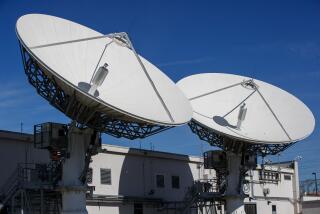Is U.S. Seeing Start of ‘Bubble’ Trouble?
In contrast to the Japanese stock market, which has been going nowhere, the U.S. stock market has been booming. Viewed from this side of the Pacific, however, there are some key similarities between the U.S. situation today and Japan’s experience with its “bubble economy” of 1987-89. In particular, investor enthusiasm in the U.S. is based on the fact that there are no signs of inflation in spite of a booming economy and a tight labor market. This development has prompted many to suggest that something structural may have changed in the U.S. economy, that a new paradigm may be in place.
But that was the case in Japan in the late 1980s, when a strong economy coincided with stable or even falling prices. Japanese wholesale price inflation remained negative well into the bubble period (until as late as January 1989). And in both the Japanese and U.S. cases, a strong currency was a key factor keeping prices low.
In Japan, the yen started appreciating in September 1985, and by 1988 had risen from 240 to 120 yen to the U.S. dollar. Even though Japan had many barriers to imports, the exchange rate movement was large enough to put downward pressure on prices at home. The fear of exchange-rate-induced deflation forced the Bank of Japan to keep interest rates low. The impact of that policy was multiplied many times over by aggressive bankers who willingly provided financing for all sorts of investment activities. Those investments, in turn, expanded the economy further.
In the case of the U.S. today, the dollar has been the strongest currency in the world for the last two years. From its postwar low in 1995 to its recent peak, the dollar has climbed from 79 to 127 yen--or 60%. The dollar’s appreciation against the German mark has been nearly 40%. The dollar’s strength has in turn helped keep prices from rising, because of local producers’ fear of foreign competition.
Indeed, the so-called beige book report, published regularly by the regional Federal Reserve banks, shows instances of U.S. manufacturers raising prices in early 1996, only to roll them back after seeing the dollar strengthen later in the year. The fact that the U.S. economy is much more open than Japan’s means that even a small degree of dollar appreciation can have a substantial impact on corporate pricing behavior at home.
*
Although U.S. bankers were cautious until late last year, owing to concern over rising delinquency rates and deteriorating household balance sheets, recent indicators suggest that they have again become aggressive lenders. And thanks to the booming economy and the tight labor market, even delinquency rates have been falling in 1997, making bankers even more optimistic.
All this suggests that a “virtuous cycle” is starting, in which confident bankers finance more investment projects, which in turn creates jobs and income, which in turn boosts asset prices, which in turn makes bankers even more confident. This is exactly how the bubble economy started in Japan in the late 1980s. The fact that Manhattan condominium prices have risen more than 25% over the last 12 months is reminiscent of what happened in Tokyo only eight years ago.
A strong currency, a relatively easy monetary policy, aggressive bankers and skyrocketing asset (especially stock and real estate) prices coinciding with a stable consumer price index are all common to the Japan of eight years ago and the U.S. today. Although there are many important differences between the two situations, there are enough similarities to warrant at least a serious comparison. And even if there are good corporate earning outlooks for U.S. stock prices, the market almost always overshoots. And overshooting is invariably followed by painful adjustments.
The policy mistake that Japan committed in the late 1980s was not so much in its continuation of low interest rates as in the monetary authorities’ inability to contain bankers’ enthusiasm. After all, the values of land and other assets used as collateral were skyrocketing, and the temptation for bankers and borrowers to capitalize on those asset values was huge.
As an American who experienced firsthand Japan’s bubble economy and its aftermath, I would like to see U.S. bank examiners make sure that American banks do not overextend themselves in the current “virtuous cycle.” Fluctuations in asset prices are a part of life, but if financial institutions go down in the process, the risk to society increases many times over, as the recent prolonged stagnation of the Japanese economy amply demonstrates.
More to Read
Inside the business of entertainment
The Wide Shot brings you news, analysis and insights on everything from streaming wars to production — and what it all means for the future.
You may occasionally receive promotional content from the Los Angeles Times.









